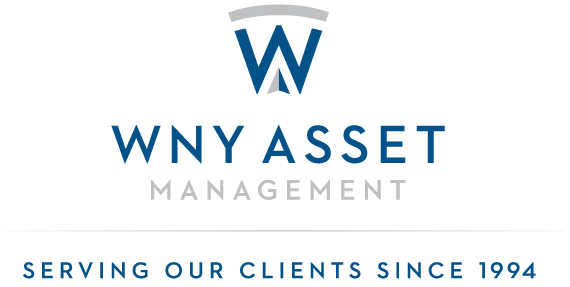
One of my most self-aware friends said of a habit he’d like to change recently: “First, I have to get sick of myself; then I have to get sick of getting sick of myself; then I have to complain about it for a while; then I’ll actually change.”
He must have been reading Prochaska and DiClemente’s work on the Transtheoretical Model, better known as the Stages of Change, because that’s precisely what they found. These steps can apply to your hopes of making any successful financial resolutions in 2023.
1. Pre-contemplation (a.k.a. getting sick of it)
When we’re in pre-contemplation, we may be feeling the pain of our actions, but we *may* not even know it consciously, and even if we do, we don’t plan on doing anything about it (for at least the next six months, according to Dr. Wayne LaMorte at Boston University’s School of Public Health).
For example, after two overflowing plates of Thanksgiving goodness and a third plate with four different “small” slices of various pies that you only counted as one collective serving, you wondered why you didn’t feel well, but it didn’t occur to you that it may have been because you consumed enough calories to feed a small family in a single sitting. Welp, time to watch some football and come back later for leftovers!
2. Contemplation (a.k.a. getting sick of getting sick of it)
When one pair of pants was hard to button, we blamed the brand; when all the pants without drawstrings felt tight, we blamed the dryer; but when we bent over and blew out our favorite pair of jeans, we had to acknowledge that the problem might actually be of our own making.
We begin to complain and may even say that we’re going to do something about it—within the next six months or so—but there is still an air of ambivalence in this stage as the sun sets on Thanksgiving festivities and dawns on the inevitable string of holiday get togethers that will persist into the New Year.
3. Preparation (a.k.a. complain about it for a while)
Also dubbed “determination,” this is when our complaint chorus reaches a crescendo that points toward taking action, at least within the next 30 days. We may even begin “modifying [our] problem behavior or acquiring new healthy behaviors.”
In other words, we’ve dusted off the Peloton and limited ourselves to only one dessert per day.
4. Action (a.k.a. actual change)
It’s happening! Now we’re counting calories and subjecting ourselves to being yelled at by super healthy people with cheesy one-liners as we sweat it out on the bike or treadmill. The difference between our physique and that of our virtual trainers is enough to keep us going in these formative stages of actual behavioral change, defined as within the first six months.
5. Maintenance
We’re not messing around now. We might even be wearing swag from the local CrossFit gym, making our own protein smoothies, and adding a #crushit hashtag to our social media profiles. As change becomes a lifestyle and a lifestyle becomes part of our identity, we might expect to “remain in this stage for up to 5 years as confidence in sustaining [our] new lifestyle increases and fear of relapse decreases,” according to an informative blog post from Yeshiva University.
6. Relapse (a.k.a. the unofficial 6th stage)
Although it’s not one of the original Stages of Change, some form of relapse while in the Action or Maintenance phase is only natural. Better yet, it can actually be helpful in building lasting change. “The learning opportunity gained by a relapse very often strengthens a client’s resolve and improves the chances for a lifelong change.”
Whew!
I first learned about Prochaska and DiClemente’s Stages of Change from Dr. Moira Somers, a financial psychologist who helps financial life planners give “advice that sticks,” which also happens to be the name of her amazing book on the topic. One of the keys, she educates us, on succeeding with any change we’d like to see in our lives is to recognize which prescribed steps are easy to follow and those which are hard to follow:
Easy To Follow |
Hard To Follow |
|---|---|
| Single behavior | Broader lifestyle change |
| Short term | Long term |
| Provides relief of current problem | Preventative in nature |
| Easy to implement | Complex or painful |
| Highly supported or supervised | High degree of self-reliance |
| Culturally common / discreet | Visibly different |
Let’s use the simple example of saving more money for retirement and apply the above referenced wisdom:
Moving from pre-contemplation to contemplation, you’ve come to grips with the fact that you need to save more for retirement to ensure that your financial future is as comfortable as your present. You could make a decision every month, or every year, which requires making the right decision many times over—or you could make a single decision by increasing your 401(k) contribution AND simultaneously using the auto-escalation feature (common in many retirement plans today) so that it will automatically increase your contribution each year by a set percentage.
Moving from preparation (asking HR for the appropriate form and/or going to the online portal for your retirement plan) to action, you make one simple decision today that will help secure your financial future for years to come.
NOTE: Automation is one of the best behavioral tools for establishing financial wellness or building wealth, regardless of your income or net worth.
You eliminate the present pain of this decision through your auto election which will correspond with your annual cost-of-living increase in your salary, so you’re not even feeling the pain of reducing your paycheck today. You’ve effectively moved into maintenance phase before you even know it.
You might maximize the maintenance of your plan working with your financial advisor to determine the optimal asset allocation mix for you, based on your unique ability, willingness, and need to take risk—or if you’re self-aware enough to know that you won’t follow up on this maintenance step, you could do worse than to choose the single “target date fund” that corresponds with your expected retirement date.
So where do you stand within the stages regarding a beneficial change you’d like to make in your life? By answering that question, you can at least move from pre-contemplation to contemplation. Then, you can accelerate the change process and begin receiving the benefits of the desired change by creating a plan that is easier to follow.
By Tim Maurer, Contributor
Copyright © 2022 Forbes Media LLC. All Rights Reserved
IMPORTANT DISCLOSURES Broadridge Investor Communication Solutions, Inc. does not provide investment, tax, legal, or retirement advice or recommendations. The information presented here is not specific to any individual's personal circumstances. To the extent that this material concerns tax matters, it is not intended or written to be used, and cannot be used, by a taxpayer for the purpose of avoiding penalties that may be imposed by law. Each taxpayer should seek independent advice from a tax professional based on his or her individual circumstances. These materials are provided for general information and educational purposes based upon publicly available information from sources believed to be reliable — we cannot assure the accuracy or completeness of these materials. The information in these materials may change at any time and without notice.
Prepared by Broadridge Investor Communication Solutions, Inc. Copyright 2021.
